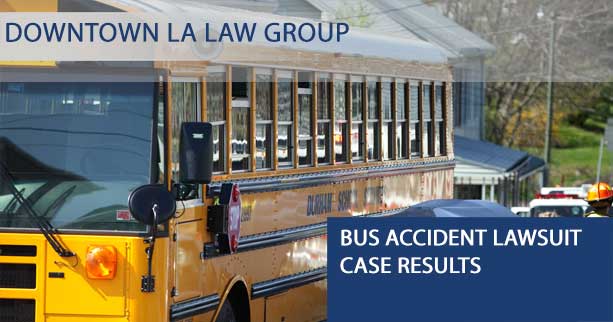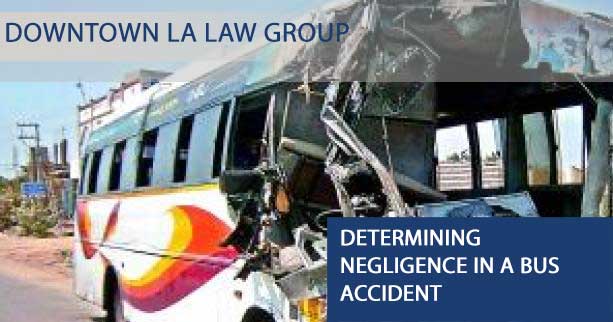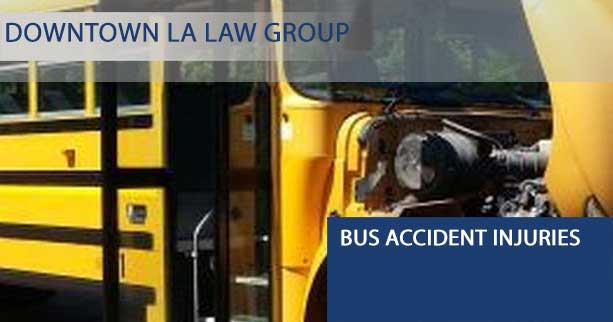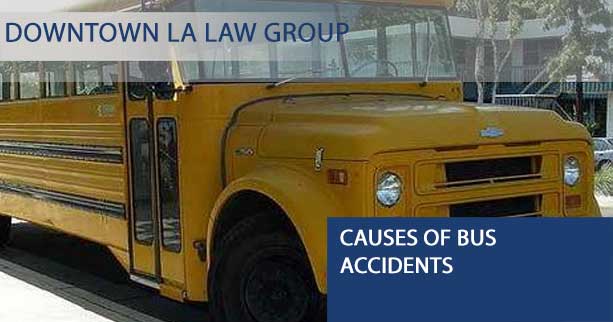Bus Accident Lawsuit
Bus Accident Statistics and Information
- Causes of Bus Accidents
- Reckless Driving
- Bus Defects
- Environmental Issues
- Fellow Driver Error
- Bus Accident Injuries
- Determining Negligence in a Bus Accident
- Procedure After A Bus Accident
- Weighing The Value Of Your Claim
- Bus Accident Lawsuit Case Results
- Compensation From A Bus Crash Lawsuit
- Statute Of Limitations On Bus Accident Lawsuits

Bus Accident Statistics and Information
Bus accidents are one of the less common types of crashes that occur on the road each day. They do occur with some consistency given the amount of buses relative to other vehicles on the road, but they are still greatly outnumbered. There are nearly 1 million registered buses on the road, which consists of school buses, transit buses, and more. As it stands, there are about 53,000 bus crashes per year, 14,000 of which resulted in injuries to individuals. 35,000 individuals were injured in those accidents. In terms of injury statistics, there are only about 250 fatal crashes per year, with fewer than 50 bus occupant fatalities and fewer than 300 fatalities in total. Only 9% of those killed in bus accidents are occupants or travelers on the buses themselves. Of those injured, 35% were passengers on buses, 8% were bus drivers, and 50% were occupants of other vehicles. The remaining 7% consisted of pedestrians, bicyclists, and other miscellaneous individuals. The different types of buses are sometimes considered more dangerous, but this may not always be the case. For example, over a ten year period, only about 0.5% of crashes involved school buses. This is much safer than most credit. The real dangers are seen in bus drivers. Young drivers under the age of 28 and elderly drivers over the age of 65 are most likely to be involved in accidents. In fact, there was a large increase in accident rates, fatalities, and injuries in those over the age of 65. The most common buses used for transportation are school buses for children, high school students, and college students, as well as transit buses for public transportation. There are also Greyhound-esque buses for long trips, party buses, and more. Each type of bus will have various amounts of passengers; large transit buses may have over 100 people on it at a time, while some district school buses may have fewer than 30 children.
– Los Angeles Bus Accident Attorney
Causes of Bus Accidents
Bus accidents may happen because of many factors. Accidents are simply something that musts be dealt with on the road, but fortunately, there are many ways to help prevent bus crashes. However, a lot of the onus of responsibility is on the driver. Bus drivers must undergo training and certification to be able to get behind the wheel and transport individuals. The issues that can cause bus accidents can be found below.
Complete a Free Case Evaluation form or call (855) 339-8879.
Blind Spots
 Buses are very large vehicles that have a few mirrors to help drivers see as many parts of the bus and its immediate area as possible. Sometimes, bus drivers are unable to see cars that approach on their sides, bicyclists that are aiming to pass, and pedestrians who are entering or exiting the bus. This can lead to the driver negligently changing lanes, pulling off, turning, and more. It is important that a bus driver do his due diligence in investigating the area and checking his blind spots extensively before driving away.
Buses are very large vehicles that have a few mirrors to help drivers see as many parts of the bus and its immediate area as possible. Sometimes, bus drivers are unable to see cars that approach on their sides, bicyclists that are aiming to pass, and pedestrians who are entering or exiting the bus. This can lead to the driver negligently changing lanes, pulling off, turning, and more. It is important that a bus driver do his due diligence in investigating the area and checking his blind spots extensively before driving away.
Lack Of Training
Bus drivers do not simply apply and begin driving. They must undergo training to acquire their commercial driving licenses (CDL), a certificate, a class B license, and more. On-the-road training may take a few weeks to complete. Driving a bus is much more difficult than driving a car; the size makes turning difficult, and drivers need to be acutely aware of their position in traffic. They must also be able to deal with citizens who use the bus and take care that they are not injured in the course of their rides. Sometimes, drivers are able to be fast-tracked due to nepotism or being in the know, resulting in responsibilities without ample training. Inadequate testing can also make it so that unskilled drivers are allowed to operate the buses.
Driver Fatigue
 Bus drivers may sometimes have shifts that place them on the road for hours at a time and cause them to be extremely tired during their workdays. Other drivers have extensive trips, such as on Flex and Greyhound buses, and may be behind the wheel for over 10 hours at a time. Driver fatigue can cause individuals to have lowered reflexes, loss of inhibition, and may cause them to fall asleep behind the wheel. Driving exhausted is equally as dangerous as driving while under the influence of alcohol or other substances.
Bus drivers may sometimes have shifts that place them on the road for hours at a time and cause them to be extremely tired during their workdays. Other drivers have extensive trips, such as on Flex and Greyhound buses, and may be behind the wheel for over 10 hours at a time. Driver fatigue can cause individuals to have lowered reflexes, loss of inhibition, and may cause them to fall asleep behind the wheel. Driving exhausted is equally as dangerous as driving while under the influence of alcohol or other substances.
Driving While Impaired
Some drivers will get behind the wheel while impaired. The most common cause of impairment is alcohol consumption; bus drivers may have a few drinks before their shifts and then go on the road. They may also participate in illicit drug use or take various substances to stay awake or to calm their nerves. Other drivers may be prescribed medication that makes it unsafe for them to drive; it is possible that doctor-prescribed medication can influence a driver’s ability to safely operate a bus. It is not only dangerous for bus drivers to drive while impaired; it is also illegal.
Reckless Driving
Bus drivers may have a tendency to drive recklessly or carelessly while behind the wheel. Many of them do not give as much space as necessary and are more likely to take space and commit violations of right of way laws because they have deadlines and do not want to be late. Further, cars are more likely to stop and acquiesce to the paths of buses because cars and passenger drivers are vulnerable and have an easier time getting injured in accidents. Examples of reckless driving include speeding, negligent lane changes, turning without signaling, running stop signs, running red lights, failing to yield, improper merging, failing to pull over for passing emergency vehicles, tailgating, driving under overpasses or bridges that are too low, and more.
Bus Defects
 Buses should be properly maintained by engineers and mechanics. These mechanics can ensure that the buses run properly, do not emit too many toxic fumes, can brake and stop appropriately, do not have engine failure, have all their working lights in order, have the tires properly filled, and more. If there is a sudden failure with a bus’s key parts, it can be disastrous. Also, because the bus is a common carrier, the internal accessories must be well maintained, too. The seat should not be defective, nor should the poles be dangerous the windows should be fitted and not broke, which could pose injuries to passengers. The steps inside the bus should not be too steep, and any carpeting inside should be laid correctly and not raised or torn. Any luggage racks or holders should keep the luggage and suitcases immobilized or unable to fall onto passengers.
Buses should be properly maintained by engineers and mechanics. These mechanics can ensure that the buses run properly, do not emit too many toxic fumes, can brake and stop appropriately, do not have engine failure, have all their working lights in order, have the tires properly filled, and more. If there is a sudden failure with a bus’s key parts, it can be disastrous. Also, because the bus is a common carrier, the internal accessories must be well maintained, too. The seat should not be defective, nor should the poles be dangerous the windows should be fitted and not broke, which could pose injuries to passengers. The steps inside the bus should not be too steep, and any carpeting inside should be laid correctly and not raised or torn. Any luggage racks or holders should keep the luggage and suitcases immobilized or unable to fall onto passengers.
Environmental Issues
Bus drivers may be unfamiliar with some roads, which could cause them to drive up one-way streets, break the speed limit, and get stuck in narrow spots. These incidents can easily cause crashes. In addition, there may be road defects, potholes, unmarked hidden driveways and exits, steep hills, sharp curves, and more that can cause the bus driver to lose control or be struck by another vehicle. Buses are also very hard to control in certain kinds of weather, and heavy rains, snowstorms, and fog can make trips on buses much more dangerous.
Complete a Free Case Evaluation form or call (855) 339-8879 today.
Fellow Driver Error
Bus drivers need to be extremely wary of other drivers on the road. These other drivers may cut buses off, pull up too closely next to them and be in blind spots, tailgate, stop short, and more. It is necessary that bus drivers look both directions and slow down at all intersections to account for other reckless drivers. Drivers may pass on the right, as well, which is very dangerous if a bus driver chooses to switch lanes.
– Party Bus Accident Attorney
Bus Accident Injuries
 Bus crashes can yield many types of injuries. The occupants of the bus as well as any other individual involved in the crash can be severely injured. Because buses are so large, they may not accrue as much damage as a passenger vehicle; as such, the occupants area not usually as severely harmed as those who hit the bus or those whom the bus strikes. It is also important to note that buses do not often have seat belts, which can increase the chance of injuries. Passengers may be ejected from seats and thrown into other seats, people, windows, or poles, or they may fall down other levels or be thrown to the floor. They may also fall off the bus when exiting or be struck by falling luggage. However, these damages are usually not as severe as those suffered by people in other cars. Some of the injuries that can arise out of bus accidents include:
Bus crashes can yield many types of injuries. The occupants of the bus as well as any other individual involved in the crash can be severely injured. Because buses are so large, they may not accrue as much damage as a passenger vehicle; as such, the occupants area not usually as severely harmed as those who hit the bus or those whom the bus strikes. It is also important to note that buses do not often have seat belts, which can increase the chance of injuries. Passengers may be ejected from seats and thrown into other seats, people, windows, or poles, or they may fall down other levels or be thrown to the floor. They may also fall off the bus when exiting or be struck by falling luggage. However, these damages are usually not as severe as those suffered by people in other cars. Some of the injuries that can arise out of bus accidents include:
- Broken bones
- Fractures
- Sprains
- Dislocations
- Strained muscles
- Torn muscles
- Torn ligaments
- Nerve damage
- Neck injuries
- Whiplash
- CRPS
- Concussion
- Traumatic brain injuries
- Closed head injuries
- Memory loss and cognitive damage
- Facial injuries and jaw damage
- Sensory damage
- Internal organ injuries
- Spinal cord damage and disc injuries
- Hip injuries
- Lacerations and abrasions
- Crushing injuries
- Puncture wounds
- Knee damage to the ACL, MCL, LCL, and more
- Severed limbs and digits
- Paraplegia and quadriplegia
- Coma
- Death
Some of these injuries are more severe than others and could require extensive treatment before the injured person returns to normal. Other damages could lifelong and permanent, and no degree of treatment will return him to his regular or previous health.
(855) 339-8879 with a legal representative about your situation now.
Determining Negligence in a Bus Accident
 If you were involved in a bus accident of some kind, you will likely wish to pursue compensation for your injuries and damages. You should not simply walk away without trying to get covered for your expenses and debts. To sue, you will need to file a personal injury claim against the responsible party. This will require you to prove that the party acted negligently. The four points of negligence are as follows:
If you were involved in a bus accident of some kind, you will likely wish to pursue compensation for your injuries and damages. You should not simply walk away without trying to get covered for your expenses and debts. To sue, you will need to file a personal injury claim against the responsible party. This will require you to prove that the party acted negligently. The four points of negligence are as follows:
- You were owed a duty of care by the responsible entity
- The duty of care was breached or violated in some manner
- The breach of duty led to an accident
- The incident resulted in actual physical injuries
A bus driver must ensure the safety of the passengers on board. If the driver acted in a reckless manner, you could hold him responsible the actions, but you could also sue the transportation company if they contributed in some way. They may not have provided adequate training or they may have hired him despite him having a suspended license or history of reckless driving. Additionally, if another driver caused the accident, you could hold that driver accountable. You may even be able to hold his company liable if he were in the scope of employment at the time of the incident. Further, if there were defects with the bus, you could potentially hold the manufacturer responsible, or the mechanic and garage responsible for upkeep. It is important that you find the correct party liable. In many cases that consist of multiple defendants, a few may be dismissed as it is deemed that they were not negligent. You should ensure that your suit is based against the proper person and that you have the best chance of success.
– Common Causes of a Bus Accident in Southern California
Procedure After A Bus Accident
If you have been involved n a bus accident, it is imperative that you do all you can to gather your evidence together so your claim does not suffer and you have a good chance of success. If you wait and do not acquire any proof, your claim will fall apart. The first step you should take is related to medical help. You can call the paramedics and get treated at the scene of the accident or you can go to the doctor. You may be rushed to the emergency room if your damages are particularly severe. You should not refuse medical treatment; the professionals can see how hurt you are and determine if you are merely ignoring the pain because of adrenaline. If you find that you are hurt a week or two later after the incident has already happened and then elect to go to the doctor, that could be problematic for the status and integrity of your lawsuit. It will be easier for the opposing insurance agent to be dubious and not believe your claim; he may say that you weren’t as injured as you said, or that you were obviously hurt elsewhere. You will need to take a lot of photographs of your injuries, the damage to the bus, the damage to the vehicles involved in the accident, the environment where the accident happened, the interior of the bus, and more. There may be video footage available on the bus as well, which can be added to your claim. Be sure to take down the contact information and insurance details of the bus driver, associated driver, and more. You can also write down the license plate number and phone number of those who are related to the case. If there is a paper trail available for you, you should document everything. This can include copies of medical receipts and treatments, doctor’s notes, receipts from the bus, credit card receipts showing payment for tickets, bus ticket stubs, and more. It will establish that you were a lawful passenger or that you got the medical help you needed. There may be numerous witnesses who saw the bus accident unfold. You can ask them for their testimonies and statements. These witnesses may be fellow bus occupants, other drivers, pedestrians, and more. You can file an accident report with the bus company or transportation company so they know that something happened and you were injured. This will allow you to show that you alerted them and they were not unaware of the incident. Many companies may try to feign ignorance or state that you never sent any complaints in. The police may have shown up to the scene of the accident to help with clean up, traffic, and more. They will likely investigate the scene and collect statements to draw their own conclusions. They will have a police report submitted to the station afterwards, which you can add to your evidence after requesting a copy. Finally, it is important that you look for an attorney with experience in bus accident lawsuits. Your attorney can provide expert witnesses, like accident reconstruction experts, engineers, and more. He will be able to write a demand letter that will incorporate all your losses and needs, and he can make sure your evidence is properly organized and relevant. He can negotiate with the insurance agent and ensure that you get a worthwhile settlement offer, or he can go to trial to fight for a better verdict. The benefit of having an attorney lies in the thorough knowledge of the law. You may not have any legal experience, which can hurt you in your case. You may also not have the money to go through the legal process and you may be injured to the point that you cannot adequately sue. A law firm will be a worthwhile partner in your case.
– Bus Stop Accident Attorney
Learn more about your options for compensation by calling (855) 339-8879.
Weighing The Value Of Your Claim
Bus accidents can result in compensation worth well over $1,000,000. However, these cases usually feature individuals with extensive injuries and drivers who were especially negligent. If you were only slightly injured or suffered minor damages, your case would not be worth that much. For example, if you sprained your ankle and suffered bruises, you would not have any compromised actions except perhaps being unable to walk properly for a few days. The sprain may not impact your life or job to a large extent, so your case would be worth a small amount of money. However, if you suffered extensive leg damage and required an amputation, your entire life would change and your future would drastically offer. The factors that determine the worth of your case include:
- Injuries, including how hurt you were, the extent of your damages, the impact the injuries had on your life and career, and more
- Your age and lifestyle, as some traits may result in lower offers (such as not having a family to provide for)
- Your job type and future career opportunities, and in situations where you cannot complete your duties or must be put on disability, your case value would likely increase
- Your negligence, or how responsible for the accident you were; if you were speeding when a bus ran a stop sign and you didn’t fix your problematic brakes, you could be held partially accountable, for example, and thus be paid a percentage of what you were owed
Wrongful deaths, paralysis, and extremely traumatic injuries are usually the most valuable cases. These lawsuits have resulted in over $1,000,000 for victims. Other damages have resulted in less than $10,000.
Bus Accident Lawsuit Case Results
Because the value of a bus accident claim can vary so greatly, you should be aware of the ways in which it can increase or decrease. The circumstances surrounding your case will greatly influence the worth. An insurance agent will weigh the factors and will make an offer based on the situation and the outcome. Some of these cases may appear similar to yours or other lawsuits that you have heard of, but result in lower settlements or verdicts. This could be due to the incompetence of attorney, expert defense by the opposing counsel, and even the type of jury that is placed behind the benches. We have provided these cases so you can see how lawsuits play out and what may influence different values. Iyers v. Santa Clara Valley Transportation District and Hustedt In Sara Iyer and Gopal Iyer v. Santa Clara Valley Transportation District and Christine L. Hustedt, a couple was injured upon leaving a bus. The Iyer, two elderly individuals, were leaving the bus together; Mr. Iyer exited first and turned to help his wife leave, who was a short and frail woman. Before he could guide her off the bus, the driver pulled away, causing Mrs. Iyer to lose her balance and fall. Mr. Iyes tried to pull his wife out of harm’s way but was unsuccessful. The bus struck Mrs. Iyer’s leg and Mr. Iyer’s arms. As a result, Mrs. Iyer suffered dislocations, breaks, fractures, and other damage to her right leg, while Mr. Iyer sustained crushing injuries, fractures, and a decreased amount of mobility in his arms and hands. The couple did not have memory of the incident. The couple asserted that the bus driver, Hustedt, pulled off before checking the bus’s stairs, mirrors, and doors to ensure all passengers safely exited. She did not check to see if any hazards were present. The defense claimed that the couple had no memory of the incident, as they stated, and thus, their testimony was irrelevant. They also said that the mechanics of the bus were preserved and functioning; namely, that the doors would not close if something blocked them and an anti-lock brake system would prevent the bus from driving off. The Iyers required extensive medical treatment and would need lifelong medical care. The plaintiff’s counsel requested nearly $2 million per individual. The jury sided with the plaintiffs, granting a total of $7.5 million for their damages.
Find out more about how we can help you. (855) 339-8879 with a representative now.
– Bus Accident with Bicycle Attorney
Hernandez v. First Student Inc. and Calderon
In Karen Hernandez v. First Student Inc. and Barbara Jean Calderon, a pair of parents sued the driver and the owner of the school bus after her son was killed at an intersection. Jonathan, Hernandez’s son, was a 13-year-old boy who was riding his bicycle when he entered an intersection without stopping to walk his bike across. He was hit by a bus driven by Calderon, which had just started to pull off. He suffered fatal injuries and died at the scene of the accident. According to testimony, a bus aide had yelled out upon Jonathan appearing, and a friend of Jonathan’s had called out to Jonathan immediately prior to the incident, with him acknowledging her before entering the intersection. Calderon claimed that she looked left, right, and left again before driving out, as is required of the law. An on-board GPS showed that Calderon was at a stop for at least three seconds. She had been driving for 15 years and had no history of tickets or accidents. The particular intersection featured shrubbery on the corner that may have partially blocked the view of Calderon, thus making it seem as though Jonathan darted out into the intersection, given the fact that a bicycle and a young teenager are small. However, the shrubbery was not large or overbearing enough that it would prevent Jonathan from seeing the bus. Further, there was another car in the intersection, and Jonathan may have thought that the bus was going to not pull out either due to the additional vehicle or to his pathway. After the crash happened, paramedics and police officers were dispatched to the scene, where they administered a field sobriety test to Calderon. The officers determined that she was impaired by her medication that she took for anxiety, blood pressure, and arthritic knees. However, it was later revealed that the officers were mistaken, and that her medication was taken the night before at 9 p.m. and only trace amounts that would not inhibit her were left in her body. She was grief stricken after the ordeal and was taken to a hospital, where further testing declared her to not be impaired at all. The plaintiff used impairment, negligence, and other arguments against Calderon. The defense countered with numerous points, including that Jonathan should have known to not ride into intersections without stopping (even though his mother testified that he was taught such safety). Calderon is also routinely tested and must pass to continue her job, which she did. The plaintiffs requested $250 million for the loss of their son. The defense countered that Hernandez’s prior methamphetamine use, the father’s relative absence, and the inability to measure value of an individual should all play into the offer. The jury essentially agreed with both parties. It found Calderon only 20% negligent and awarded the family $500,000 for the wrongful death of Jonathan.
Godizanos v. City and County of San Francisco and San Francisco Municipal Transportation Agency and Monge
In Luz Godizano and Robert Godizano v. City and County of San Francisco, and San Francisco Municipal Transportation Agency, a bus driver slammed on the brakes and caused a woman to hurt her head. Godizano was a passenger on a bus when the bus driver was proceeding as normal through an intersection. As the light turned from green to yellow, a car driven by Monge proceeded to turn in front of the bus, causing the driver to slam on the brakes. Godizano proceeded to lose her balance and get jerked forward into one of the metal bars on the bus, hitting her head in the process. She suffered hemorrhages, hematomas, post-traumatic hydrocephalus, memory loss, and more after the incident. She was conscious but not altogether aware or functioning, so she was taken to a hospital for treatment. After the accident and treatment, Godizano complained of weakness in her extremities, loss of balance, odd walking and strides, mental impairment, and persistent neck pain. She had various activities that she participated in prior to the accident but claimed that she could not continue them any longer. Godizano sued the transportation company and the negligent driver for her injuries. She stated that the bus driver did not brake as he approached the intersection and the other driver waas in the wrong for running a yellow and causing the bus to stop. Godizano’s husband also filed for loss of consortium. The defense countered that the driver was at fault and the bus driver acted appropriately to avoid an accident. Prior to trial, the parties reached a settlement of $2.1 million. Monge’s carrier would also pay an additional $100,000 for the damages.
Get started today by calling (855) 339-8879.
Marshall v. DS Waters
In Daniel Marshall v. Los Angeles County Metropolitan Transportation Authority dba Los Angeles Department of Transportation dba LADOT dba Metro, County of Los Angeles, City of Los Angeles, DS Services of America Inc., DS Waters of America Inc., Nadia Banks, Kalvin Labutaong and Trinidad Labutaong, a man sued numerous parties after the bus he was on stopped suddenly and caused him to injure his jaw. Banks was driving the bus on which Marshall was traveling when a water truck changed lanes in front of the vehicle. Banks changed lanes and proceeded; as the bus continued, another vehicle changed lanes from the opposing side and caused the bus driver to slam on the brakes. As a result of the sudden stop, Marshall was propelled into a pole on the bus and hit his jaw, suffering additional injuries to his wrist and back. His injuries caused him to be unable to eat the same foods as before, and he could not complete his hobbies like playing guitar in the same manner. He also had dental work done to fix damages with his teeth. The lawsuit was filed against various parties. The couple driving the vehicle that changed lanes were not entered into the case, while Banks, the bus driver never showed up. The city and county were removed from the case. Marshall claimed that Banks was traveling too fast; the transportation authority said that the water truck made the bus stop suddenly and change lanes; and DS Waters said that Banks had ample time to stop. The jury declared a mixed verdict, holding Banks and the drivers of the other vehicle, the Labutaongs, negligent, at 65% and 35% each, respectively. Marshall was awarded $60,000 for his injuries.
Conclusion
The level of negligence of another party can greatly affect the worth of your case and will play a large part in the litigation. Further, bus drivers can be held accountable if they were negligent, and they may be held totally liable in some situations, freeing their employers from having to pay compensation. It is important that ample evidence is put into the cases, as even simple forgetfulness can take away from a plaintiff’s testimony.
– Slip and Fall Accidents on Buses
Compensation From A Bus Crash Lawsuit
A bus accident lawsuit can result in various amounts and types of restitution for your injuries. You can be totally covered for the damages you suffered and not have to pay off the expenses and debts. The different parties responsible for the incident can all pay portions or totals. It will be up to your attorney to negotiate a worthwhile deal or prove your case in a court of law to render a successful and adequate verdict. You can receive coverage for the following:
- Medical bills from the past and future for your treatments, hospitalization, surgery, medication and prescription drugs, physical therapy, rehabilitation, wheelchair, crutches, and more
- Missed wages from time spent away from work from the past and future, as well as disability pay
- Property damage for any items that were damaged in the incident, such as your vehicle, personal belongings, phone, laptop, and more
- Pain and suffering for your emotional damages, psychological trauma, PTSD, anxiety, fear, and more
- Wrongful death damages if a family member or loved one died in the incident, which can result in funeral expenses, burial fees, loss of consortium, loss of expected inheritance and savings, loss of income, pre-death medical bills, pre-death pain and suffering, and more
- Punitive damages, which are awarded in times of egregious negligence or the deliberate attempts to cause harm, and are monetary amounts meant to punish the defendant; they are seldom won due to being viewed as excessive, though
Your goal should be to receive the maximum compensation available under the law. You should now settle for anything less than you deserve, even if the insurance agent is doing all he can to make you accept a low or insulting offer.
To speak with a Los Angeles bus injury lawyer, call (855) 339-8879.
Statute Of Limitations On Bus Accident Lawsuits
The time limit you have to file a lawsuit in the State of California is 2 years from the date of the injury. Failure to sue within this time limit will prevent you from pursuing any legal action in the future. The sooner you file a claim, the better off you will be. Your evidence will be preserved and you won’t have a diminished memory, nor will your witnesses. It is possible for your statute of limitations to be extended. If you were underage at the time of the incident, your statute would begin when you turn 18 years old. If you were left in a state of physical or mental incapacitation, you can also wait until you return to normalcy before you sue. The defendant must further be in the state; if he has vacated or left, the statute would be suspended until he returns. If you intend to file a claim against a government entity, be aware that the statute of limitations is 6 months from the date of the injury instead of 2 years. This is an extremely important detail, as some claims go against state-run organizations. You should ensure that you are within the correct amount of time for your case by speaking with a bus accident lawyer. Many victims miss out on compensation because they do not know when their deadlines are. A lawyer will file your case for you and schedule everything accordingly.
Over $1 BILLION Recovered
for Our Clients
By submitting this form, you agree to receive telephone calls and text messages at anytime, which include hours outside of business hours (8:00 am PST – 9:00 pm PST). This is so that we may reach you as soon as possible in order to consult on your potential case.
Featured Lawyers









